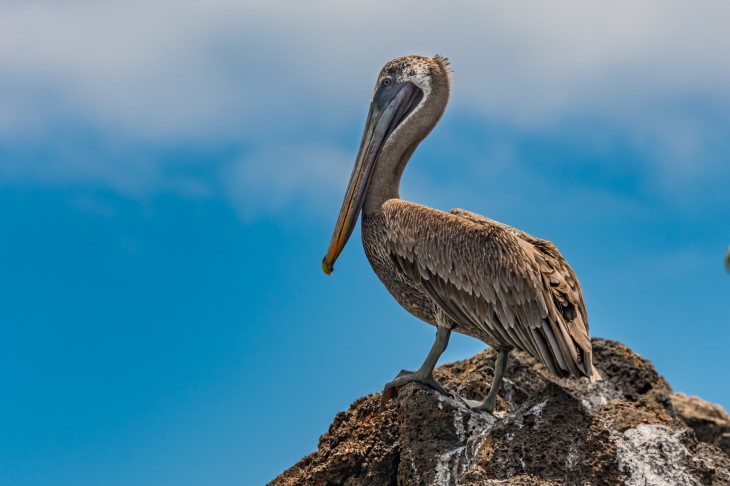
SIGN UP TO RECEIVE
15% OFF
IN YOUR NEXT TOUR

How many species of frigatebirds are there in the world?
Male Christmas Frigatebird with its unmistakable white egg-shaped patch. This species is endemic to Christmas Island and breeds in only four main nesting colonies.
SCROLL DOWN TO READ

How many species of frigatebirds are there in the world?
SCROLL DOWN TO READ
How many species of frigatebirds are there in the world?
The frigatebirds form a small family of five closely related species, placed in a single genus fregata. These highly aerial seabirds are really designed for a predominantly aerial life with streamlined body, long and slender wings (the span of which may reach to about 2.3 meters nearly 8 feet), deeply forked tail, small rounded head, short neck and long bill. They are strictly marine and frequent both coastal and pelagic waters. They can be found in the warm seas and oceans of the tropics and subtropics where there are available food resources and especially flying fish, and suitable wind regime adapted to their soaring and gliding behavior.
Although being very similar in appearance, each species shows some distinctive physical features allowing a better identification at closer range. The frigatebirds are able to spend several days and nights in flight. However, they are very clumsy on land, and it is very difficult for them to take off from the ground and almost impossible from the water. They usually nest in trees where they can perch and take flight more easily, but sometimes on the ground too. In the same way, the frigatebirds do not swim or dive. They obtain the food by dipping while flying low over the water and catch the prey with the bill off the water surface. These birds lack of waterproof plumage and cannot feed underwater.
Ascension frigatebird (Fregata aquila)
Apart from its smaller size, the adult male is very similar to the magnificent frigatebird. The female is brownish black with a rusty brown mantle and chest, and normally lacks any white patches present on the front of female birds of other species. The occasional female observed with a white belly may be breeding before obtaining the full adult plumage. The Ascension Frigatebird nests exclusively on the ground, not presumably through preference but rather by force of circumstances, due to the habitat type. It is found on Boatswain Bird Island just off Ascension Island in the tropical Atlantic Ocean, having not bred on the main island since the 1800s. This species is classified as Vulnerable.
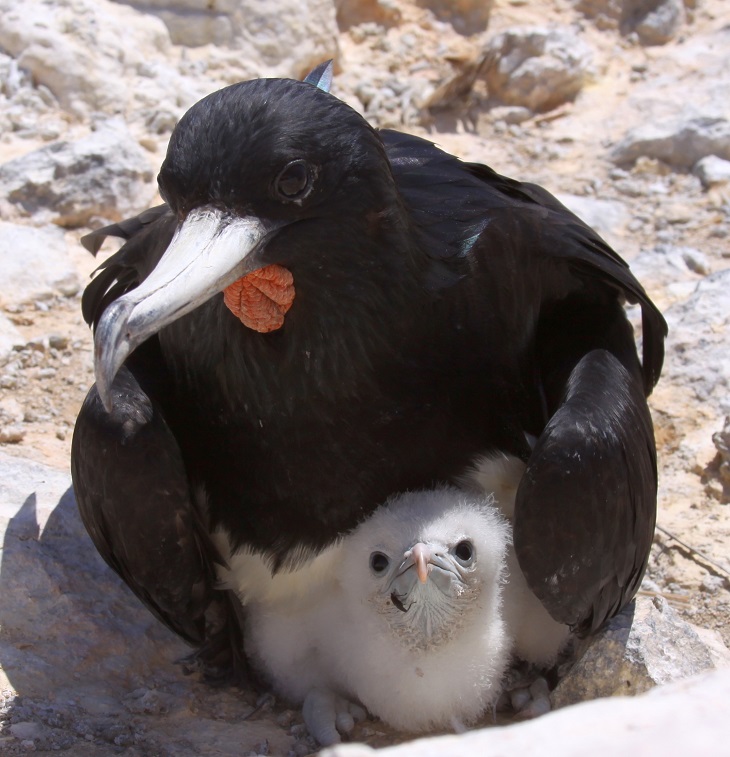
Magnificent frigatebird (Fregata magnificens)
With a body length of 89–114 cm (35–45 in), it is the largest species and has the longest bill. The adult male is all-black with a scarlet throat pouch that is inflated like a balloon in the breeding season. Although the feathers are black, the scapular feathers have a purple sheen, in contrast to the male great frigatebird’s green sheen. The female is brownish-black, but has a white breast and lower neck sides, a brown band on the wings, and a blueish-grey eye-ring. Widespread in the tropical Atlantic, it breeds in colonies in trees in Florida, the Caribbean and Cape Verde Islands, as well as along the Pacific coast of the Americas from Mexico to Ecuador, including the Galápagos Islands.
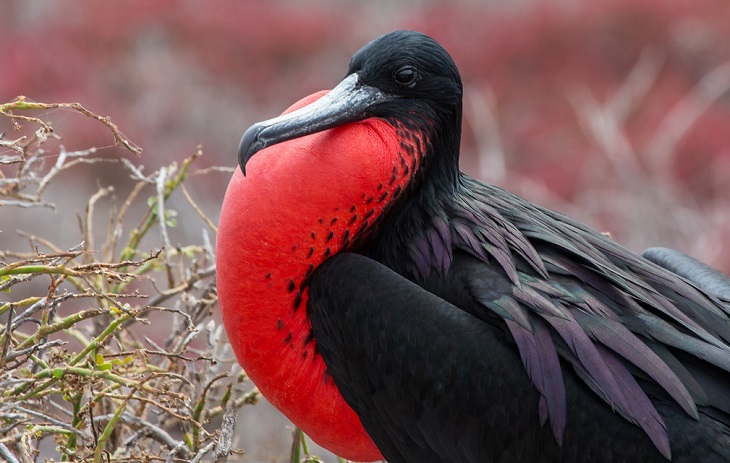
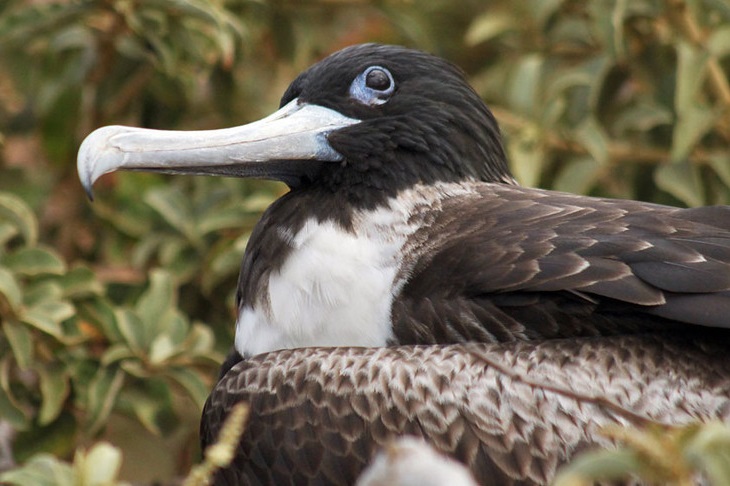
Lesser frigatebird (Fregata ariel)
With a body length of around 75 cm (30 in), it is the smallest species. The adult male has black upperparts with greenish to purple metallic gloss on the mantle and scapulars and is black underneath except for bold white axillary spurs. The upperparts of the female are dark with lighter wing bars. The head is black while the belly and the neck collar are white. Except the Lesser Frigatebird with a wingspan of 193 centimeters, the four other species have a wingspan of more than two meters, up to 244 centimeters for the Great Frigatebird. Found along tropical and subtropical waters across the Indian and Pacific Oceans. Atlantic race trinitatis was limited to Trindade, off Eastern Brazil but may now be extinct.
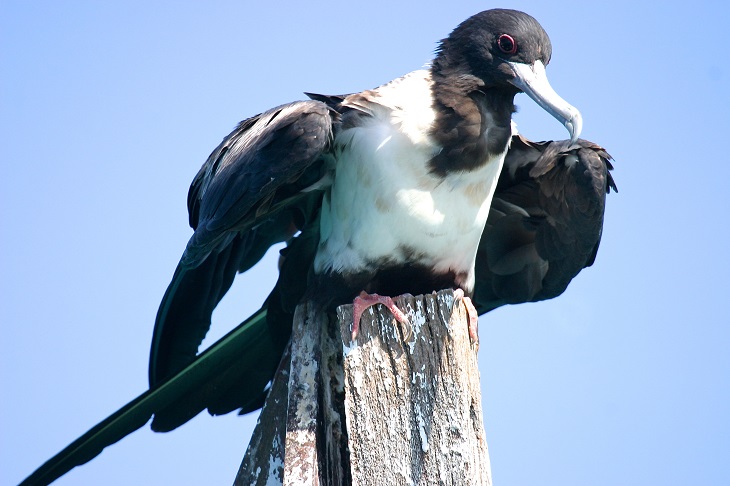
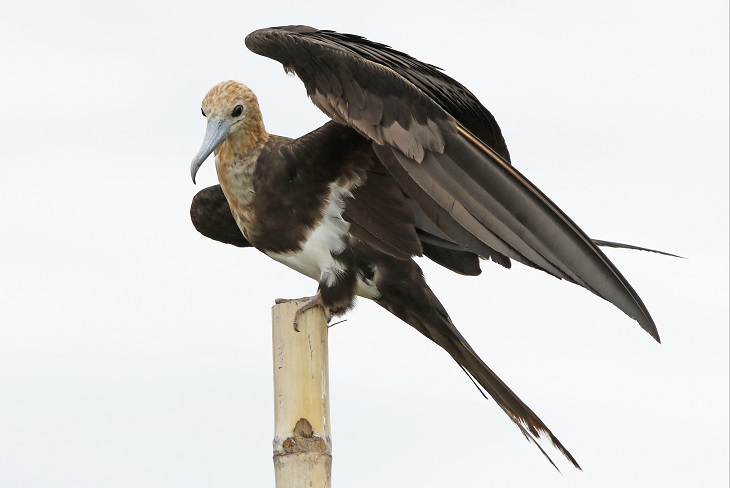
Christmas frigatebird (Fregata andrewsi)
The adult male is the only frigatebird species with white on its belly (an egg-shaped patch). It is larger with a longer bill than the related great frigatebird. Its upperparts are black with green metallic gloss on the mantle and scapulars. The female has dark upperparts with brown wing bars, a black head with white belly and white collar (sometimes incomplete) around its neck. Breeds on Christmas Island in the Indian Ocean and forages in the surrounding waters. It is considered as critically Endangered with decreasing population.
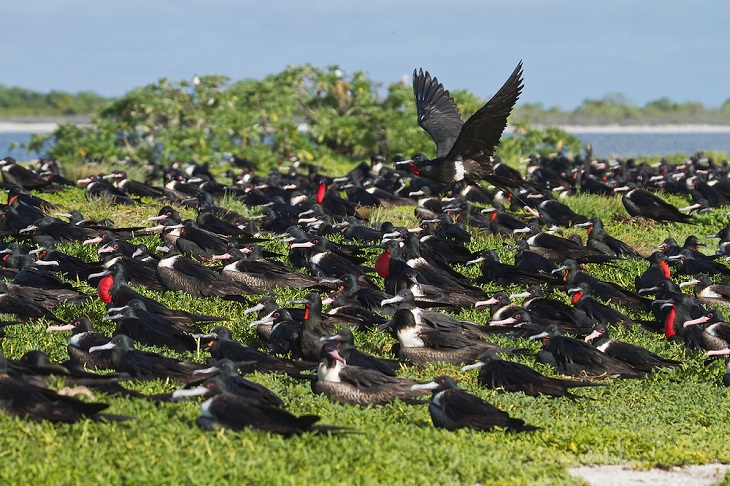
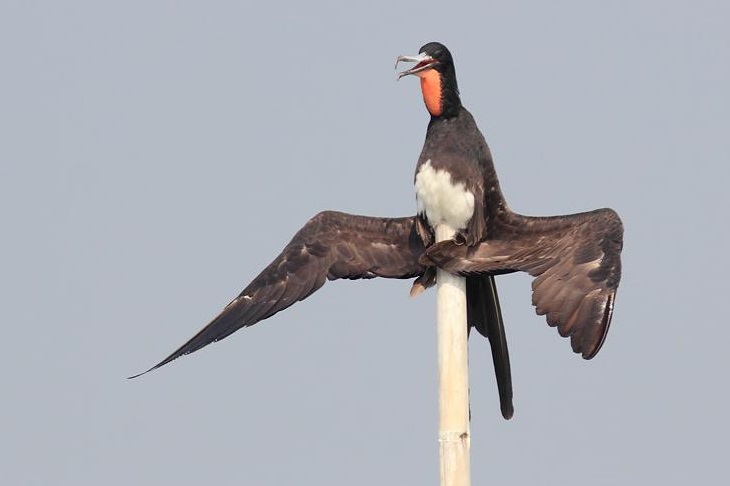
Great frigatebird (Fregata minor)
The adult male has black upperparts with green metallic gloss on the mantle and scapulars. It is completely black underneath with subtle brown barring on the axillaries. The upperparts of the female are dark with lighter brown wing bars. Its head is black with a mottled throat and belly. The neck has a white collar. It has wide distribution throughout the tropical seas in Pacific, Indian, as well as one colony, the Trindade and Martim Vaz in the south Atlantic and of course the Galapagos Islands. They are not globally threatened and evaluated as Least Concern.

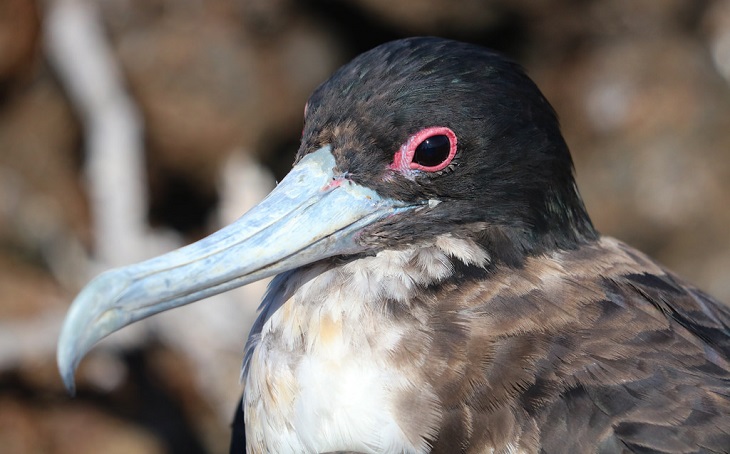
The bright red gular pouch of males becomes conspicuous during the courtship displays when it is fully inflated, whereas the females have duller plumage and often white areas on the underparts. The young birds usually have buff to apricot head and neck and browner plumage. The males have black plumage overall with blue, purple and green gloss on head, neck and mantle, and more or less white markings on the underparts, from white belly in the Christmas Frigatebird, to small white crescents on axillaries in the Lesser Frigatebird. Outside the breeding season, the red gular pouch is much reduced. The long, hooked bill is dark grey to blackish, the eyes are dark brown with dark eye-ring, the legs and partially webbed feet are blackish. The females have blackish-brown plumage on head and upperparts with little gloss, but the underparts often show a fairly large white area from lower breast to lower belly. However, the dark morph female of the Ascension Frigatebird differs from the male only by the brown pectoral band, present in the pale morph too. The bill is pale bluish-grey to pale pink, the dark eyes are surrounded by pinkish-red eye-ring (purplish-blue in Magnificent Frigatebird), legs and feet are mostly pinkish.
